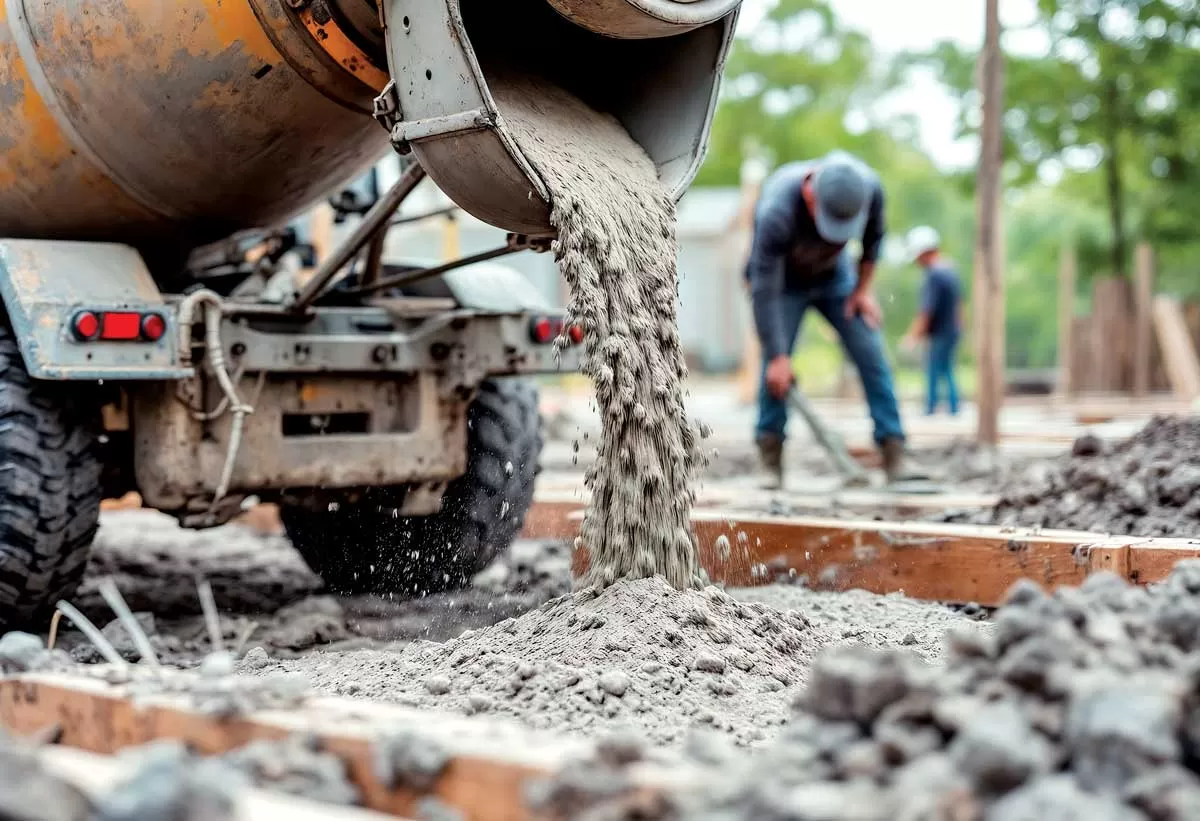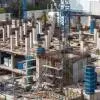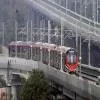Efficiently handling the transportation and placement of concrete is essential to help maintain the quality of construction, meet project timelines by minimising downtimes, and reduce costs – by 5 to 15 per cent, according to Sandeep Jain, Director, Arkade Developers. CW explores what the efficient handling of concrete entails.Select wellFirst, a word on choosing the right equipment, such as a mixer with a capacity aligned to the volume required onsite, from Vaibhav Kulkarni, Concrete Expert. “An overly large mixer will increase the idle time (and cost), while one that is too small can delay schedules.”“High-capacity transit mixers, typically with capacities ranging from 6 to 14 cu m, help ensure batching accuracy and reduce the number of trips, which limits inconsistencies,” adds Jain.“When batching plants are not available onsite, use self-loading transit mixers that can produce and transport concrete,” recommends V Manivannan, Director, Construction, Plant and Equipment (CPE), Afcons. “Pairing these mixers with concrete pumps can enhance initial project efficiency and reduce costs. Afcons poured 232 cu m of concrete at the Jamrani Dam Project, Uttarakhand, using this method.” He adds that one should select the right capacity of concrete pumps based on factors like pumping length, vertical distance and concrete slump. “Use a nomograph chart to choose the correct pump.”Jain believes boom pumps are ideal for high-rise structures, while line pumps work better for tighter or more confined sites. Specialised pumps are suited for advanced applications, such as tunnelling or shotcrete, adds Kulkarni. “A truck-mounted pump might be ideal for open environments, while trailer pumps could prove more versatile in tight urban projects.”“Selecting the right type of pump for each job makes a marked difference in both cost control and execution speed,” says Shridhar Ayyar, Head - Manufacturing, RMX, Nuvoco Vistas Corp.Modern concrete pumps and mixers are equipped with smart controls, telematics and sensors. Modern mixers with automated batching features precisely measure and mix materials, reducing human error. Kulkarni advocates using these technologically advanced machines. “Using mobile apps and GPS in transit mixers to accurately track their locations helps monitor any stoppages or route deviations, allowing for immediate corrective actions,” suggests Manivannan. “Also, implement RMS sensors to monitor real-time fuel consumption, detect pilferage attempts and take appropriate actions.”Chaitanya Bhagde, Senior Manager, Plant & Machinery, Shapoorji Pallonji, advocates the use of AI tools or advanced software like command batch and optimistic route planner to control and automate the batching processes, and achieve greater quality, consistency and efficiency. Also, slump monitoring tools can help make necessary adjustments. RFID or QR-based tracking systems that integrate with the batch sheets data of QC systems enable the parameters at the time of production to be compared to live parameters.Optimise movementAt Nuvoco Vistas Corp, one of the most impactful areas to optimise the movement of concrete has been reducing dry runs between plants, shares Ayyar. “By strategically planning deliveries and leveraging technology to cluster orders more effectively, we’ve been able to significantly cut down on unnecessary travel, directly impacting fuel consumption and equipment wear.”Efforts to reduce waiting time at customer sites have also paid off, he adds. “We work closely with site teams to ensure that when our transit mixers arrive, they’re able to unload quickly and return for the next job – keeping our fleet in motion and our turnaround times tight.”“Ensuring that the concrete placement area is free of obstacles reduces unnecessary waiting time for transit mixers,” says Manivannan.Essentially, from both the perspective of the RMC supplier and the site team, it makes sense to “align the mixer dispatch time with the availability of the pump to prevent queueing or idle time”, says Bhagde. Close communication between the construction company and the ready-mix concrete vendor is critical. Another lever has been improving the cumulative yield per trip, continues Ayyar. “By closely tracking trip data, we’ve identified opportunities to increase the volume transported per journey. In areas where site access allows, we’ve introduced higher-capacity bowl mixers, enabling more concrete to be delivered with fewer trips. This not only reduces transport costs but also contributes to lower emissions – a win for both business and the environment.” Fleet utilisation, that is, the average number of trips completed per day by each transit mixer remains a critical metric. “We’ve managed to enhance this through better planning and round-the-clock operations where feasible,” adds Ayyar.Traffic can impact the movement of concrete. Ideally, the concrete vendor should opt for the shortest route from the plant to site after factoring in traffic and aim for an early morning start. Traffic management near the site is the contractor’s responsibility. Kulkarni emphasises the need to plan the truck traffic flow around the site. “Organise separate lanes for loaded mixers and empty vehicles to prevent bottlenecks and reduce idle time.”Best practices“Monitor the loading of concrete to ensure that it aligns with the capacity of the drum; this will avoid spillage, overloading, excess wear of the drum blades and even segregation,” says Bhagde. “During transportation, set the drum rotation to 2-6 rpm so that the mix remains homogeneous, and sets inside. Inspect the electrical and hydraulic system and other parameters affecting the life of the machine.”Overloading mixers or ignoring recommended batch cycles often results in inconsistent mixes, adds Kulkarni. “In hot climates, cool aggregates or use ice to manage the concrete temperature. In colder weather, heated water or special admixtures prevent freezing and maintain workable slump. Institute testing protocols such as slump tests and cylinder strength tests to verify consistency and quality before pumping.”As concrete has a limited setting time, Jain points out that close coordination between batching plants, the transport teams and site crews is critical. Communication is indeed critical for efficient pumping operations. Bhagde points to the need to maintain standard communication modes such as radios or a proper signalling system between the pump operator, pour point supervisor and transit mixer drivers. At the pumping site, “ensure that site readiness, pour sequences and pump setup are synchronised to minimise delays,” says Ayyar. “Efficient planning delivers maximum output and improves the cubic metre volume per pumping pour.”“Ensure the pump setup is stable, check the outrigger placement and ground firmness,” suggests Bhagde. “Select a pumpable mix with well-graded aggregates, proper slump (generally 100–150 mm) and a low water-cement ratio. Continuously cast a pour after starting, evenly, to avoid cold joints and segregation.”As for the pipeline, keep it as straight and short as possible, avoiding unnecessary bends, elbows and steep inclines to reduce pressure loss, he adds. “Each 90° bend adds approximately 9-10 m of effective length. Use hard pipe for horizontal runs where possible to minimise the pressure loss. Lubricate the pump line using a grout or slick mix before pumping. Check for air pockets or blockages in the pipeline. Fix all the clamps, support horizontal lines at every 10 m, with fixed supports in the instance of vertical lines.”Manivannan recommends using additional chutes in transit mixers to facilitate the placement of concrete.Maintenance mattersEvery equipment used to transport, deliver and place concrete must be regularly maintained. “Pre-shift checks of hoses, belts, oil levels, hydraulic lines and tyres, with prompt attention to minor repairs, and adherence to the manufacturer’s maintenance schedule for lubrication, filter changes and part replacements are essential,” says Kulkarni. “Proper washdowns after each use preserve equipment functionality and help prevent contamination of future batches. Using equipment with fitted sensors generates real-time data, which pre-empts breakdowns and allows the scheduling of servicing at convenient times.”At Nuvoco, combining preventive maintenance, efficient scheduling and optimal allocation based on site requirements has helped the monthly pump productivity see an uptick, shares Ayyar.Train operators As skilled personnel are more adept at using modern concrete pumps and mixers, troubleshooting, making on-the-spot adjustments and avoiding accidents, Kulkarni says, “Encourage operators to undertake formal training or certification programmes. Also, assign experienced team members to mentor junior staff, imparting critical lessons on controlling flow rates, adjusting slump and navigating complex site challenges.”Bhagde suggests training teams on pump handling, safety and troubleshooting common issues like blockages or hose whipping.Safety focus Provide personal protective equipment to minimise the damage in the eventuality of an accident, advises Kulkarni. Conduct regular safety briefings to highlight issues such as hose whips, line blockages or potential blowouts in pump lines. Install clear signage and barricades around pumping areas to protect workers and bystanders.Bhagde cautions to watch for overhead power lines and follow site safety protocols. Manivannan suggests equipping transit mixers with essential safety features like headlights and reverse horns for hassle-free operations.Green concretingTo minimise the adverse onsite environmental impact of concreting, Kulkarni suggests collecting and recycling the washout water where feasible and properly disposing of cement-laden wastewater. Explore ‘green’ admixtures or supplementary cementitious materials (fly ash, slag) that lessen the project’s carbon footprint while maintaining or enhancing concrete performance.Clearly, there are myriad ways to drive better returns on your investment in concrete.Quotes1. Efficiently handling the transportation and placement of concrete helps reduce costs – by 5 to 15 per cent. - Sandeep Jain, Director, Arkade Developers2. Pairing self-loading transit mixers with concrete pumps can enhance initial project efficiency and reduce costs. - V Manivannan, Director, Construction, Plant and Equipment (CPE), Afcons3. Avoid unnecessary bends in the pipeline; each 90° bend adds approximately 9-10 m of effective length. - Chaitanya Bhagde, Senior Manager, Plant & Machinery, Shapoorji Pallonji4. We’ve enhanced fleet utilisation through better planning and round-the-clock operations where feasible. - Shridhar Ayyar, Head - Manufacturing, RMX, Nuvoco Vistas Corp5. Pre-shift checks should cover hoses, belts, oil levels, hydraulic lines and tyres. - Vaibhav Kulkarni, Concrete Expert
















